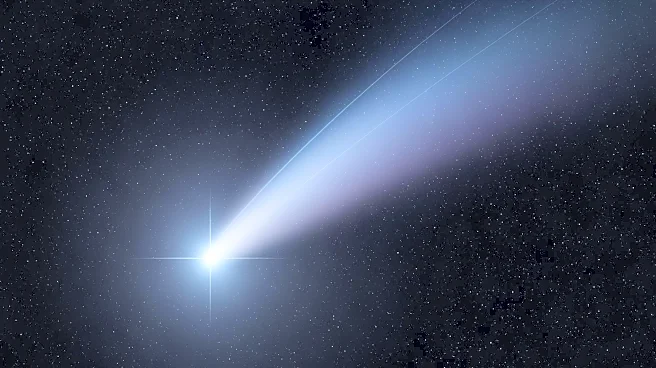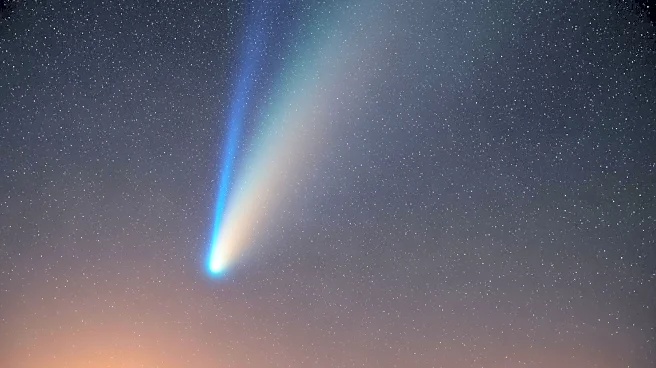What's Happening?
Comet Lemmon, which reached its closest approach to the Sun on November 8, remains visible in the night sky, providing stargazers with a chance to observe its tail. The comet, discovered by the Mount Lemmon Survey,
is currently passing through the constellation Ophiuchus. Observers are advised to use binoculars or telescopes to view the comet approximately 45 minutes after sunset, facing southwest. Despite its fading brightness, temporary increases due to outbursts are possible.
Why It's Important?
The visibility of Comet Lemmon offers a rare opportunity for amateur astronomers and the general public to engage with celestial events. Observing comets can enhance understanding of solar system dynamics and the behavior of these icy bodies. The event also underscores the importance of astronomical surveys and the role of technology in discovering and tracking celestial objects.
Beyond the Headlines
Comet Lemmon's appearance highlights the unpredictability of celestial phenomena and the excitement of astronomical observation. It may inspire interest in astronomy and encourage educational initiatives to promote scientific literacy. The event also raises questions about the long-term tracking and study of comets, contributing to broader discussions on space exploration and research.











